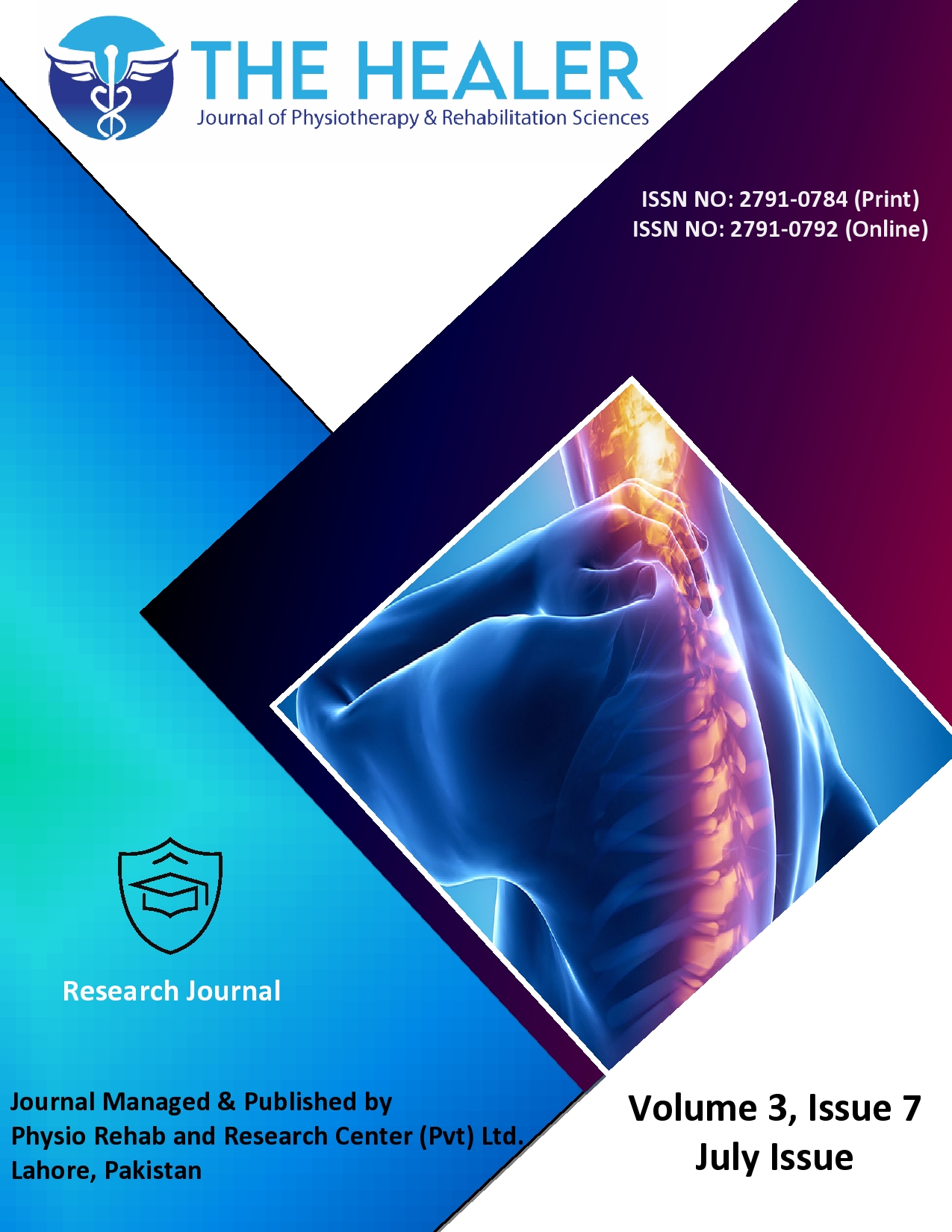Low Back Pain and Associated Risk Factors in Cross-Country Motorcyclists in Pakistan: A Cross-sectional Study
Low Back Pain & Risk Factors in Motorcyclists
DOI:
https://doi.org/10.55735/hjprs.v3i7.162Keywords:
back pain, cross-country motorcyclist, fatigue, risk factorsAbstract
Background: Motorcycles have been one of the most essential means of conveyance worldwide. It is relatively difficult to point out the predisposing factors that cause lower back pain among cross-country motorcyclists. Factors that appear to have a significant impact on musculoskeletal problems in respect of the biological, environmental, vehicle, psychological, daily activities, and discomfort of motorcyclists particularly people who use motorcycles for recreational purposes. Objective: To find the prevalence of lower back pain in cross-country motorcyclists and the factors affecting it. Method: In this cross-sectional study, the data was collected from CRC-Club six months after approval of the synopsis. The sample size was calculated to be 150 in which the estimated proportion was 0.53, desired precision of estimate was 0.08, and the confidence level was 0.95. The motorcyclists who drive motorbikes for more than one hour daily, aged between 18 to 60 years and those who drive on different quality roads (highways, narrow and unpaved) and experience lower back pain for more than three months were included. Patients with a history of any infection or inflammation, recent injury, tumor, systemic or degenerative disease or disability were excluded from the study. Data collection procedure: A questionnaire was developed, and pilot testing was done to determine the reliability of the questionnaire using Cronbach's alpha. The data was collected by filling out questionnaires from CRC club bikers. Result: Out of 150 male cross-country motorcyclists, 72 had a smoking habit and 78 had not. About 10.7 percent of motorcyclists had no discomfort, 53.3 percent had mild, 32 percent had moderate discomfort, and 4 percent had severe discomfort. There was a significant association between sitting posture and lower back discomfort (p.000). Motorcyclists who had slumped postures had more severe pain than motorcyclists who had flat posture, long lordosis posture, or short lordosis posture, while there was no significant association between lower back discomfort and motorcycle type (p-value .321). Conclusion: With increased riding time, the discomfort in the lower back increased. It concluded that the worst posture between flat posture, long lordosis, and short lordosis is slump posture. When riding motorcycles, riders should avoid slumping posture.
Downloads
References
Organization WH. Helmets: a road safety manual for decision-makers and practitioners: World Health Organization; 2006.
Solagberu B, Ofoegbu C, Nasir A, Ogundipe O, Adekanye A, Abdur-Rahman LOJIp. Motorcycle injuries in a developing country and the vulnerability of riders, passengers, and pedestrians. 2006;12(4):266-8.
Robertson S, Minter AJAE. A study of some anthropometric characteristics of motorcycle riders. 1996;27(4):223-9.
Tan C, Delbressine F, Chen W, Rauterberg M, editors. Subjective and objective measurements for comfortable truck driver’s seat. Proceedings of the Ninth International Symposium on Advanced Vehicle Control (AVEC 2008); 2008.
Kolich MJAE. A conceptual framework was proposed to formalize the scientific investigation of automobile seat comfort. 2008;39(1):15-27.
Balasubramanian V, Jagannath MJTrpFtp, behavior. Detecting motorcycle riders local physical fatigue and discomfort using surface electromyography and seat interface pressure. 2014;22:150-8.
Noormohammadpour P, Mansournia MA, Asadi-Lari M, Nourian R, Rostami M, Kordi RJS. A subtle threat to urban populations in developing countries: low back pain and its related risk factors. 2016;41(7):618-27.
Shirado O, Ito T, Kaneda K, Strax TEJAjopm, rehabilitation. Flexion-relaxation phenomenon in the back muscles: a comparative study between healthy subjects and patients with chronic low back pain. LWW; 1995. p. 139-44.
Freburger JK, Holmes GM, Agans RP, Jackman AM, Darter JD, Wallace AS, et al. The rising prevalence of chronic low back pain. 2009;169(3):251-8.
Arunachalam M, Mondal C, Singh G, Karmakar SJM. Motorcycle riding posture: a review. 2019;134:390-9.
Mirbod SM, Yoshida H, Jamali M, Masamura K, Inaba R, Iwata HJIAoo, et al. Assessment of hand-arm vibration exposure among traffic police motorcyclists. 1997;70:22-8.
Tathe SR, Wani KP. Modeling, Simulation & Analysis of Whole Body Vibration for Two Wheeler. SAE Technical Paper; 2013. Report No.: 0148-7191.
Israr A, Tan HZ, Mynderse J, Chiu GT-C, editors. A psychophysical model of motorcycle handlebar vibrations. ASME International Mechanical Engineering Congress and Exposition; 2007.
Berlingo I. Výhled čelním oknem vozidla.
Ma'arof MIN, Ahmad IN, editors. The proposed standard method for motorcycle nomenclature system. 2012 Southeast Asian Network of Ergonomics Societies Conference (SEANES); 2012: IEEE.
Faris WF, Al Omari Y, Bin Sapian AR, Husin MJJoDR. A new concept design of a motorbike with 3D model for the Malaysian market. 2011;9(1):16-43.
Amrutkar AS, Rajhans N, editors. Ergonomic posture for motorcycle riding. conference paper; 2011.
Dutta K, Basu B, Sen DJOE. Evaluation of postural, psychosocial stress and driver behavior of motorbike riders in India. 2017;13(S1):25-36.
Ogundele OA, Afolabi OT, Fehintola FO, Olorunsola A, Adelosoye AJS. Prevalence and management practices of low Back pain among commercial motorcyclists in Ilesa southwest, Nigeria. 2017;5(3):186-91.
Wójcik R, Trybulec BJCEjoss, medicine. Occurrence and intensity of spinal pain in motorcyclists depending on motorcycle type. 2017;20(4).

Downloads
Published
License
Copyright (c) 2023 The Healer Journal of Physiotherapy and Rehabilitation Sciences

This work is licensed under a Creative Commons Attribution 4.0 International License.














